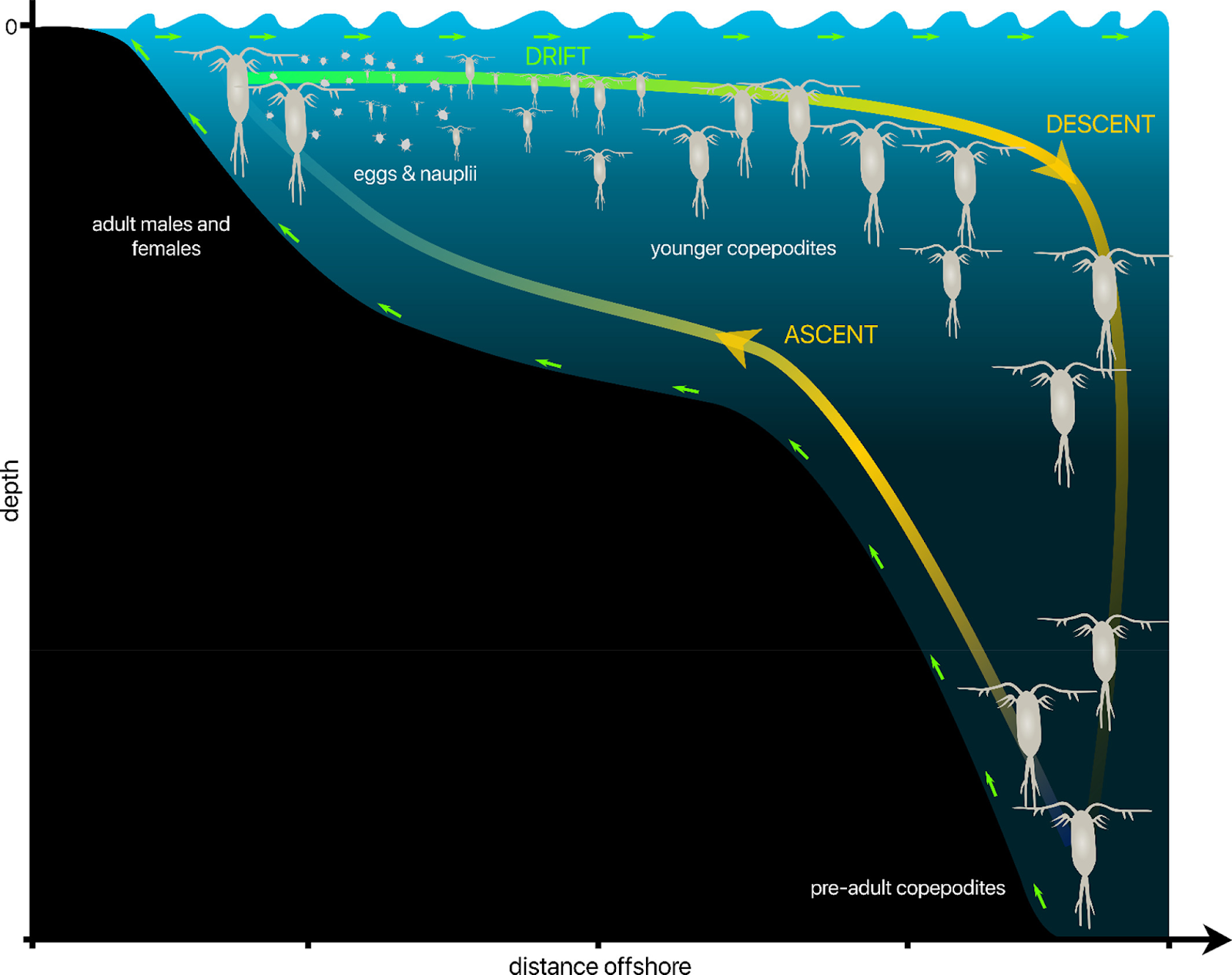Important Facts For Prelims
Diel Vertical Migration and Carbon Sequestration
- 11 Dec 2023
- 5 min read
Why in News?
Deep-sea creatures, like zooplankton, ascend at night in Diel Vertical Migration (DVM) for nourishment and safety. This synchronised journey showcases nature's marvels and significantly influences Earth's Carbon Cycle.
What is Diel Vertical Migration (DVM)?
- DVM is a synchronised movement of marine organisms, often seen in deep-sea creatures like zooplankton, as they migrate vertically in the water column, ascending towards the surface at night and descending to deeper levels during the day.
- This pattern helps these organisms find food while avoiding predators, showcasing a strategic survival tactic.
- At dusk, organisms from the mesopelagic layer (Deeper Layer or Twilight Zone) rise to the safety of the epipelagic zone (Upper Layer), capitalising on darkness to feed on microscopic phytoplankton while evading diurnal predators.
- This synchronized migration, finely attuned to natural light cycles, stands as the planet's largest biomass migration, occurring daily across all oceans.
How DVM's help in Carbon Sequestration?
- Organisms inhabiting the mesopelagic layer actively extract substantial carbon from upper ocean layers while feeding on surface plankton, transporting it to deeper waters.
- Within the twilight zone, migratory animals contribute to the food chain, passing on consumed carbon to their predators. The resultant carbon-rich waste sinks to the ocean floor, becoming a crucial carbon sink, trapping carbon dioxide and aiding in atmospheric carbon concentration regulation.
What is Carbon Sequestration?
- About:
- Carbon sequestration is the long-term storage of carbon in plants, soils, geologic formations, and the ocean.
- Carbon sequestration occurs both naturally and as a result of anthropogenic activities and typically refers to the storage of carbon.
- Types:
- Terrestrial Carbon Sequestration: Terrestrial carbon sequestration is the process through which Co2 from the atmosphere is absorbed by trees and plants through photosynthesis and stored as carbon in soils and biomass (tree trunks, branches, foliage, and roots)
- Geologic Carbon Sequestration: Co2 can be stored, in oil reservoirs, gas reservoirs, unmineable coal seams, saline formations and shale formations with high organic content.
- Ocean Carbon Sequestration: Oceans absorb, release and store large amounts of Co2 from the atmosphere. This can be done in two ways- enhancing the productivity of ocean biological systems through Iron fertilization, and injecting CO2 into the deep ocean.
- The dumping of iron stimulates phytoplankton production, which in turn leads to enhanced photosynthesis from these microorganisms, helping in CO2 absorption.
UPSC Civil Services Examination, Previous Year Questions (PYQs)
Prelims
Q. The acidification of oceans is increasing. Why is this phenomenon a cause of concern? (2012)
- The growth and survival of calcareous phytoplankton will be adversely affected.
- The growth and survival of coral reefs will be adversely affected.
- The survival of some animals that have phytoplanktonic larvae will be adversely affected.
- The cloud seeding and formation of clouds will be adversely affected.
Which of the statements given above is/are correct?
(a) 1, 2 and 3 only
(b) 2 only
(c) 1 and 3 only
(d) 1, 2, 3 and 4
Ans: (a)
Q. In the context of mitigating the impending global warming due to anthropogenic emissions of carbon dioxide, which of the following can be the potential sites for carbon sequestration? (2017)
- Abandoned and uneconomic coal seams
- Depleted oil and gas reservoirs
- Subterranean deep saline formations
Select the correct answer using the code given below:
(a) 1 and 2 only
(b) 3 only
(c) 1 and 3 only
(d) 1, 2 and 3
Ans: (d)
Q. Consider the following agricultural practices: (2012)
- Contour bunding
- Relay cropping
- Zero tillage In the context of global climate change,
which of the above helps/help in carbon sequestration/storage in the soil?
(a) 1 and 2 only
(b) 3 only
(c) 1, 2 and 3
(d) None of them
Ans: (b)







